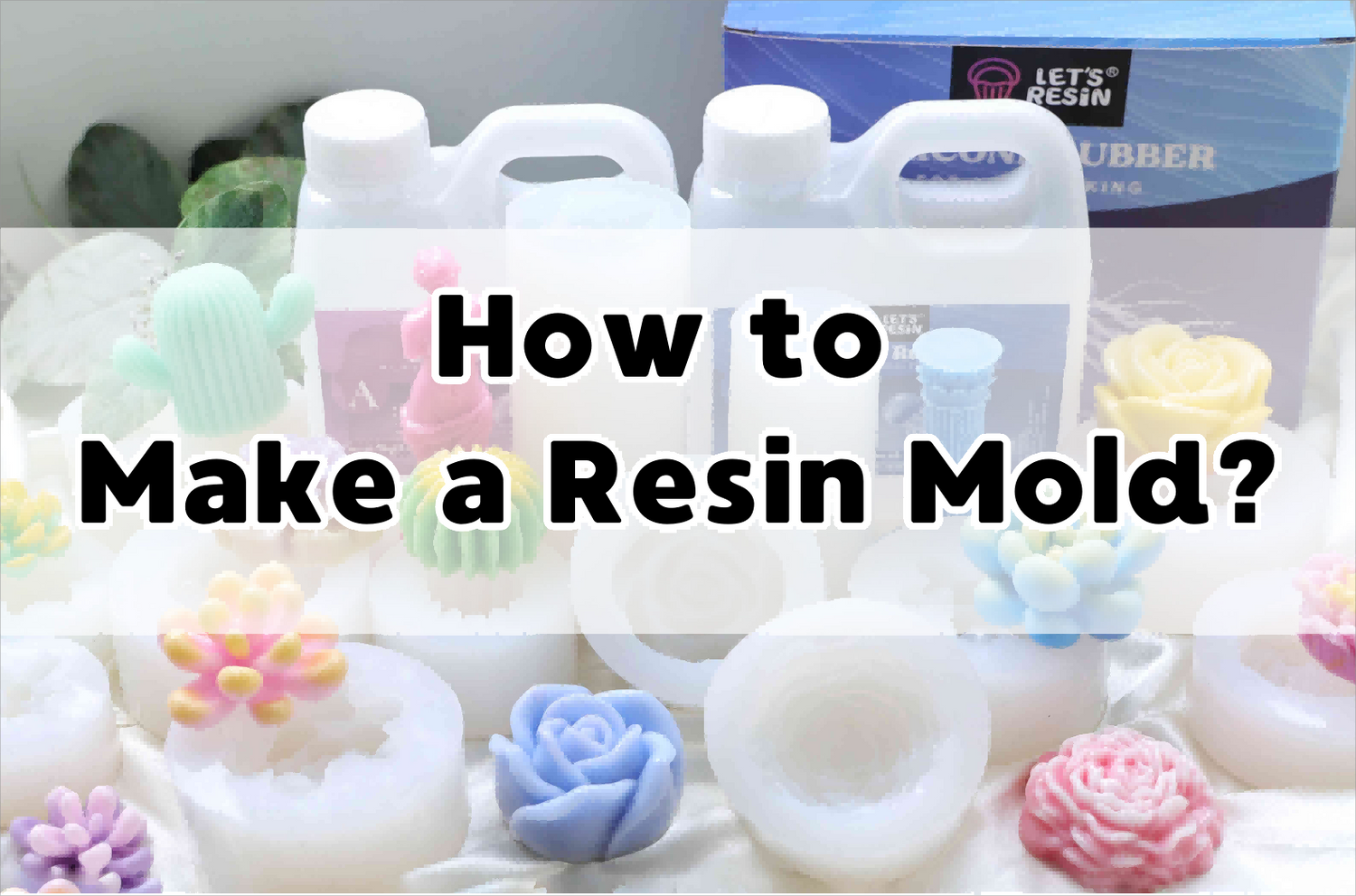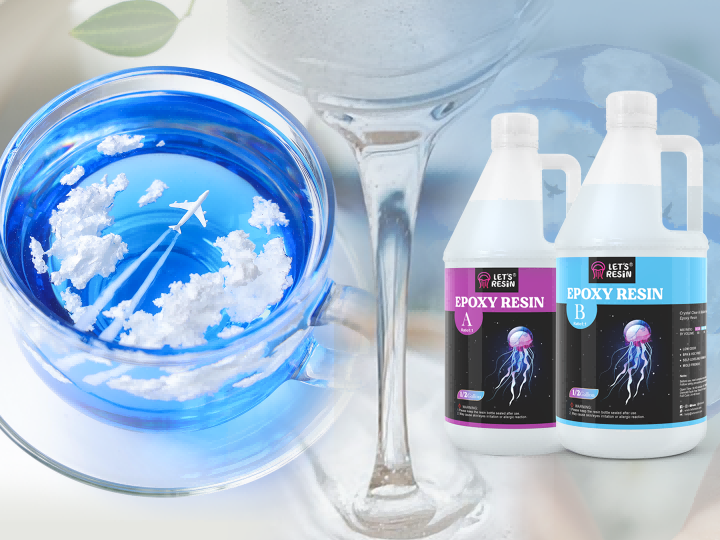Creating adorable pieces using resin is a laugh and cutting-edge hobby. You paint with liquid resin, solidifying it into a robust and seamless finish. Resin may be used to create earrings, paintings, and unique, one-of-a-kind objects. Various design options may combine arts and crafts with strategies like pouring and layering. With its colorful colors, summary patterns, and natural inspirations, resin artwork lets your creativity run wild.
What is Resin?
Resin consists of two distinct liquid components - the resin and the hardener - which, when combined, chemically react to form a solid material. This process usually takes between 24 to 72 hours. Once fully cured, resin becomes extremely hard, glossy, long-lasting, and impervious to chemicals and water.
Resins are typically composite mixtures, comprising a combination of organic compounds interconnected through a chemical bond. The adhesive nature of resin renders it an exceptionally adaptable substance for artistic and various other purposes. Apart from its inherent composition, resin can be amalgamated with diverse pigments and additives, creating entirely novel substances.
Types of Resin
Silicone Resin
Silicone resin exhibits exceptional heat resistance and can be employed to establish a lasting, anti-adhesive layer for your artwork. Additionally, it possesses water-resistance properties. Frequently, it is utilized as an additive to enhance the longevity of paints and varnishes for artwork rather than being employed as a material for three-dimensional molding.
Epoxy Resin
Epoxy, also known as polyepoxide, is widely favored in art resin for its versatility and ability to cure to a nearly transparent finish. This makes it a preferred choice for novice resin artists. The initial thick, viscous consistency of epoxy lends itself well to shaping three-dimensional forms, and it can be enhanced by incorporating various materials such as oil paints, flowers, wood, and alcohol ink to create unique art pieces.
Polyurethane Resin
Polyurethane resin exhibits excellent fluidity before curing and can be effortlessly molded into any desired form. Like epoxy, it can be enriched with various additives such as pigments and dyes. Additionally, specific additives can modify the resin's physical characteristics. For instance, the curing time can be prolonged, or the strength of the solidified plastic can be enhanced.
Polyester Resin
Polyester (fiberglass resin) resembles epoxy resin and is a cost-effective substitute with satisfactory water resistance. Nevertheless, the fragility of cured polyester resin compared to epoxy and its more challenging mixing procedure somewhat counterbalance these advantages.
Phenolic Resins
Phenolic resins, originating from phenol and formaldehyde, are thermosetting polymers recognized for their remarkable heat resistance, flame retardancy, and dimensional stability. Widely utilized in industries demanding high-temperature capabilities, such as automotive and aerospace, phenolic resins are essential in manufacturing brake linings, electrical components, and molded parts. Their superior mechanical and thermal properties are attributed to the high cross-linking density, especially when reinforced with carbon fiber.
Vinyl Ester Resins
Vinyl ester resins represent a blend of polyester and epoxy resins, harnessing the benefits of each. Their exceptional chemical resistance and corrosion-resistant properties make them perfect for use in challenging environments such as chemical processing plants and marine constructions. Vinyl esters demonstrate superior fatigue resistance and toughness compared to standard polyester resins. They are frequently utilized in projects that demand structural strength and protection against corrosive substances, including tanks, pipelines, and storage containers.
Creative Ways to Use Resin for Art
Beautiful, durable tabletops, chairs, and different home decor gadgets can be made with resin. To make custom resin coasters, pour the resin into molds and decorate with paints, glitter, or embedded gadgets. Resin's versatility allows even regular items to be uniquely designed to create one-of-a-kind pieces of art. This sensible method to growing resin art now not only enhances your pieces' cultured price but also adds capability.
Create Resin Tabletops and Furniture
You can incorporate numerous elements into resin tabletops and furniture designs to give them a lovely look. These elements can include glass, metallic, or wood. You can also use pigments and dyes to create colorful styles. The sturdiness of resin makes it a perfect cloth for surfaces that want to face up to everyday use.
Personalize Home Decor Items
Resin can be used to feature special touches to photograph frames, clocks, and lamps. By experimenting with distinct pouring strategies and adorning with ornamental factors, you may create precise pieces that decorate the overall appearance of your private home.
Make Resin Coasters
Creating resin coasters is a popular mission for novice and experienced artists. You can customize them with one-of-a-kind shapes, colorings, and embedded items to match your indoor design or non-public style. The procedure includes pouring resin into molds, adding pigments or decorations, and permitting them to therapy.
The Adaptable Use of Resin in Mixed-Media Art
Resin may be combined with numerous materials to create precise combined-media paintings. You can add add-ons to the resin, which includes plant life, pearls, and stones, for delivered texture and size. Resin can also be used as a topcoat to enhance, seal, and provide a sleek, modern look for collages, artwork, and photos. Resin may be combined with various artwork mediums, including acrylics, pastels, or inks, to create complex and captivating results. Resin is a favorite medium for artists who want to experiment with traditional artwork designs because of its versatility.
Embedding Objects
Use tiny charms or trinkets, beads, or stones, or include natural factors like vegetation and leaves to feature texture and interest to your resin creations.
Resin as a Topcoat
A style of innovative tasks may be sealed and enhanced with the software of resin as a topcoat. Adding a clear gloss will give artwork, pictures, and collages a more polished appearance.
Combining Resin with Other Media
Use acrylics, pastels, or inks to feature texture and intensity in your mixed-media works. Resin layers made with these mediums can bring about tricky and captivating designs.
Integrate Organic Components in Resin Crafts
Adding natural materials like wood, plants, and leaves to your resin artwork creates a unique, organic touch. Certain natural materials are dried well and sealed earlier than resin to keep their beauty. This technique produces beautiful jewelry, coasters, and wall art. The transparency of the resin vividly highlights the organic elements, giving the piece an undying, nicely preserved appearance. Adding herbal factors to resin artwork not only enhances its visible attraction but also provides a deeper, more excellent, significant fine.
Preparing Organic Materials
Proper coaching is critical for the use of natural substances. Flowers and leaves must be very well dried and sealed to save your decay. Wood needs to be treated and sealed to avoid moisture problems.
Crafting Unique Jewelry
Incorporating small portions of wood, plant life, or leaves into resin earrings can create distinctly particular pieces. The resin's transparency allows these materials' herbal beauty to polish through.
Designing Home Decor
Organic substances may create particular home decor objects such as coasters, trays, and wall artwork. This embedding approach preserves those substances' herbal splendor and creates a stylish, lasting look.
Combining with More Materials
You can enhance the visible appeal of your resin artwork by adding extras like paint, glitter, flowers, or steel flakes to herbal elements. This combination affects a unique mixture of artificial and natural beauty.
Handling Common Issues with Resin Art
Troubles with resin artwork can include bubbles, uneven curing, and sticky surfaces. To save your bubbles, blend the resin slowly and use a warm gun to launch any trapped air. Ensure correct measurements of resin and hardener to avoid curing issues. If the floor remains sticky, it can be due to fallacious blending or curing conditions. This may be fixed by adding a skinny layer of nicely blended resin. Always paint in manageable surroundings, as dirt and debris can contaminate your artwork. Understanding unusual troubles and finding answers enables you to make sure your resin artwork tasks flip out fantastically.
Preventing and Removing Bubbles
Blend the resin gradually to prevent bubbles, and employ a heat gun to release any trapped air. If bubbles appear, gently move a heat source over the surface to remove them.
Ensuring Proper Curing
Accurate measurements of hardener and resin are essential for correct curing. Follow the producer's commands and ensure the workspace temperature is ready effectively.
Resolving Sticky Surfaces
Sticky surfaces frequently result from fallacious mixing or curing conditions. Applying a skinny layer of well-combined resin can restore this.
Maintaining a Clean Workspace
Dust and debris can ruin your resin artwork. You may prevent infection by maintaining your work protected throughout curing and running in a clean, dust-loose environment.
Taking Care of Common Defects
Common faults like fish eyes, dimples, and uneven surfaces may be constant by sanding and using a sparkling layer of resin. Identifying and addressing those problems early on ensures an expert result.
Layering and Blending Techniques
Apply color layers to reap easy shade transitions, and use dreary places to spruce up your pursuits. This will give your resin paints length and depth.
Best Practices and Safety in Resin Art
Dealing with chemical substances while operating with resin should be done carefully, as they are probably hazardous if not accomplished. Always wear protective equipment, goggles, a mask, and gloves, and make sure the airflow is proper while running. Follow the producer's instructions while blending and curing resin to avoid errors. Before you start, preserve your workspace neat and free from debris, and ensure you have got all the systems you'll need close by. After using the device, clean it immediately and dispose of any resin waste in compliance with nearby policies. By adhering to these first-rate practices, you could experience resin artwork securely and effectively.
Personal Protective Equipment
Use a mask, gloves, and goggles to protect yourself from resin spills and fumes. Wearing antique clothing or aprons will guard your apparel and ensure that your workstation is air-pleasant and ventilated.
Workspace Preparation
Make sure the whole thing is organized, position your device and components for clean get admission to, and cowl any flooring or surfaces to prevent resin spillage.
When blending and curing, use warning to prevent injuries by measuring the hardener and resin appropriately, integrating the aggregate according to the precise procedures to save your bubbles, and treating it properly.
Waste Disposal and Tool Cleaning
To reduce your environmental impact, thoroughly cast off resin waste, clean your equipment as quickly as you end up using them, and inspect environmentally appropriate disposal.







